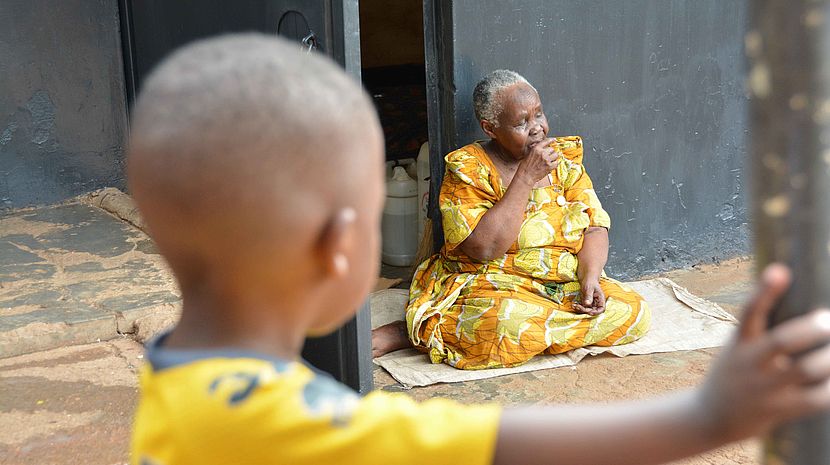Anchoring child safeguarding in our partnerships

Keeping children safe
According to the CBM Child Safeguarding Policy, children with disabilities are twice as likely to be abused compared to children without disabilities. This puts children with disabilities at a higher risk of abuse as they are more likely to be taken advantage of by a care giver or a stranger.
Child safeguarding entails keeping children, all over the world, safe from abuse through awareness raising, prevention, responding and reporting. This is achieved through the active development and implementation of child safeguarding policies within all service centered institutions.
In order to ensure that all children are safe from all forms of abuse, CBM in Kenya undertook an inaugural child safeguarding training at the just concluded Kenya Implementing Partners Forum (KIPAF). The training brought together 21 partners from 16 counties to raise awareness and assist in development of core roles and responsibilities that will ensure their institutions are child safe.
Making our programmes child safe
Speaking during the child safeguarding training that was held in Lukenya, Machakos County, CBM’s Country Representative, David Munyendo, emphasised that all CBM programmes need to be safe and child friendly. He further noted that this is of great importance to CBM in Kenya as almost 70% of its programme beneficiaries are children.
“The issue of child safeguarding is a constitutional affair for Kenya and is also embedded in the Children’s Act. Additionally and from a global perspective, all the countries that are signatories to the UN Convention on the Rights of the Child are urged to implement the provisions therein,” he added.
CBM upholds Child Safeguarding in its practices and has developed a Child Safeguarding Policy that is based on the UN Convention on the Rights of the Child (1989), the national child protection legislation of Germany and Kenyan laws that protect children.
Milestones in Kenya
According to the CBM East Africa Regional Child Safeguarding Officer, Heidi Ayuma, the Child Safeguarding policy acts as a mirror that helps CBM reflect on its own internal working processes, providing an inward look at its undertakings in reference to child safeguarding.
“To have these mechanisms in place we have the policy, code of conduct for CBM staff and its representatives, a reporting structure and we also conduct various trainings where our staff are trained to be able to identify abuse, prevent, respond and report on the same. We also conduct internal audits to assess compliance to our own policies and guidelines,” said Ayuma.
In Kenya, CBM has worked so far with six learning institutions for the last two years to help them undertake self-audits and anchor child safeguarding in their respective organisational culture. Additionally, the Kenya Country Office with technical support from the Child Safeguarding Officer, has been testing the child protection mechanisms in the partner institutions to ensure they are effective.
Enhancing partner learning and growth
Sabatia Eye Hospital located in Vihiga County, is one of the partners that has walked this journey with CBM. The Chief Executive Officer at Sabatia Eye Hospital, Dr. Ernest Ollando, expressed the significance of the concluded training in achieving a Child Safe hospital.
“The training has been quite important as it has shed more light on child safeguarding and child protection. We as partners now have a better understanding of the two and this will make it easy in terms of implementation,” he said.
Dr. Ollando noted that during the workshop they were able to learn a lot including how to formulate a child safeguarding policy, how to implement, monitor and evaluate the set guidelines in the policy.
“Child safeguarding is not an event but a process that is continuous. As an institution that deals with so many children during surgeries and treatment we intend to train all our staff on the policy and also to put in place, a mechanism to ensure checks and balances,” he affirmed.
Taking the message home
The Sabatia Eye Health Hospital CEO also added that the hospital is the process of making its services child friendly as a way of implementation of the policy through an action plan.
“Going forward we have an action plan for the organization, one of the things we are keen to do this year is to develop a Pediatric Centre of Excellence. It is an eye center dedicated to children so that we can offer eye care services to children in a child friendly environment where they can just be children and play as they receive care,” he said.
Dr. Ollando, who is also a Pediatric Ophthalmologist, committed to the hospital’s plan to sensitize their staff; that is the board members, the hospital management committee and attending staff, as well as all their partners, about the child safeguarding policy. They also intend to appoint a focal child safeguarding person in the institution to oversee the child safeguarding agenda and come up with the reporting tools to address emerging cases.
Other considerations for greater impact
However, according to Mr. Munyendo there is still a challenge in capturing issues of either negligence or child abuse due to influence from the family and cultural contexts. Some of the abuse cases are rarely reported to authorities either due to fear of stigmatization or cultural perceptions.
“There is a challenge in terms of reporting cases of abuse but we do encourage everyone to create an atmosphere that is free of stigmatization, so that we can have children being more confident to speak out on issues of abuse, as failure to report such cases leaves a lee way for the offenders to continue abusing children.”